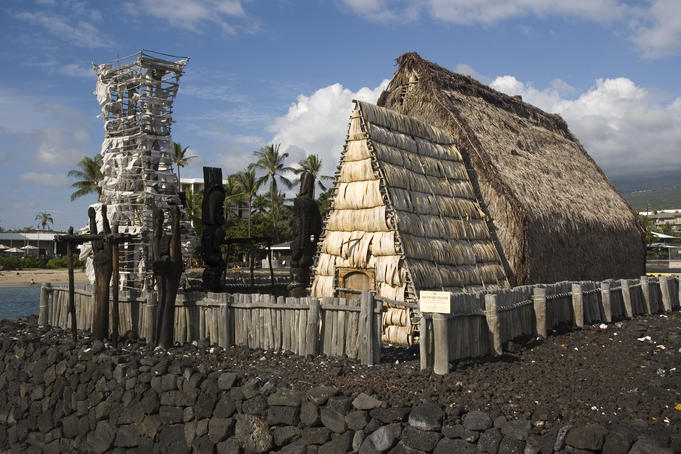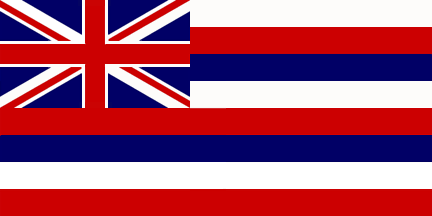 The most recent of the 50 U.S. states, Hawaii is located in the central Pacific Ocean. Around 2,00 miles southwest of the North American mainland, it is the southernmost U.S. state. Due to the island chain’s beautiful beaches and rainforests, Hawaii is extremely popular with tourists. The main islands of the state are Ni’ihau, Kaua’i, O’ahu, Moloka’i, Lana’i, Kaho’olawe, Maui, and Hawaii. The largest of the islands is Hawaii, with an area of 4,028 square miles. The most populated is Oahu, at 953,207 inhabitants. Hawaii’s economy is dominated by the sandalwood, whaling, sugarcane, pineapple, military, tourism and education industries, with tourism contributing the most. Please continue reading to find out more about the population of this island state and it’s unique history, geography, culture and people.
The most recent of the 50 U.S. states, Hawaii is located in the central Pacific Ocean. Around 2,00 miles southwest of the North American mainland, it is the southernmost U.S. state. Due to the island chain’s beautiful beaches and rainforests, Hawaii is extremely popular with tourists. The main islands of the state are Ni’ihau, Kaua’i, O’ahu, Moloka’i, Lana’i, Kaho’olawe, Maui, and Hawaii. The largest of the islands is Hawaii, with an area of 4,028 square miles. The most populated is Oahu, at 953,207 inhabitants. Hawaii’s economy is dominated by the sandalwood, whaling, sugarcane, pineapple, military, tourism and education industries, with tourism contributing the most. Please continue reading to find out more about the population of this island state and it’s unique history, geography, culture and people.
Geography of Hawaii
Mauna Kea, Hawaii’s tallest mountain, is 33,500 ft tall if measured from it’s base beneath 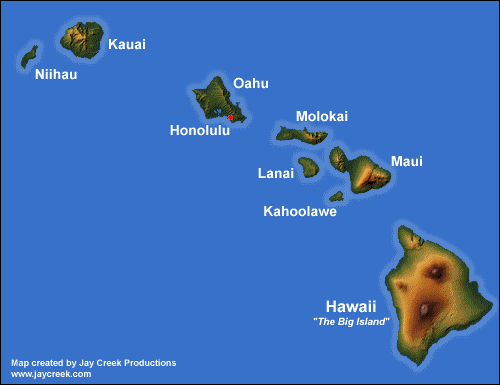 the Pacific ocean, making it taller than Mount Everest. Besides the eight main islands, there are several other smaller islands and over 100 islets. Formed solely from volcanic activity from an undersea magma hotspot, there are new volcanoes constantly being added to the Hawaiian island chain. The eruption of the Kilauea volcano in 1790 killed around 5,400 warriors and their families. The slopes of the volcanoes are very unstable, and they often create damaging landslides and avalanches, which cause earthquakes and even tsunamis.
the Pacific ocean, making it taller than Mount Everest. Besides the eight main islands, there are several other smaller islands and over 100 islets. Formed solely from volcanic activity from an undersea magma hotspot, there are new volcanoes constantly being added to the Hawaiian island chain. The eruption of the Kilauea volcano in 1790 killed around 5,400 warriors and their families. The slopes of the volcanoes are very unstable, and they often create damaging landslides and avalanches, which cause earthquakes and even tsunamis.
[wp_ad_camp_1]
The state’s wildlife is diverse, although most of its endemic species are endangered. Of the 2,690 plant species on the islands, 800 of them are endangered native species, while 946 of them are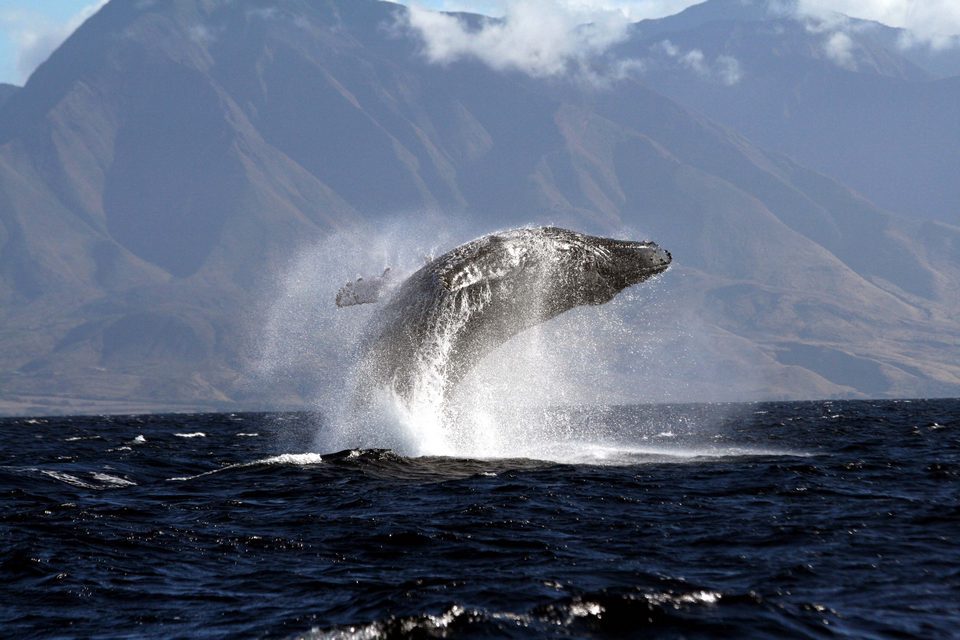 non-indigenous species. Hawaii has two national parks- Haleakala National Park on Maui and Hawaii Volcanoes National Park, on Hawaii. There are also three national historical parks on the islands- Kalaupapa National Historical Park on Molokai; Kaloko-Honokohau National Historical Park on Hawaii; and Pu’uhonua o Honaunau National Historical Park on Hawaii. Papahānaumokuākea Marine National Monument, covering around 140,00 square miles of sea waters, is larger than all of America’s national parks combined.
non-indigenous species. Hawaii has two national parks- Haleakala National Park on Maui and Hawaii Volcanoes National Park, on Hawaii. There are also three national historical parks on the islands- Kalaupapa National Historical Park on Molokai; Kaloko-Honokohau National Historical Park on Hawaii; and Pu’uhonua o Honaunau National Historical Park on Hawaii. Papahānaumokuākea Marine National Monument, covering around 140,00 square miles of sea waters, is larger than all of America’s national parks combined.
Climate of Hawaii
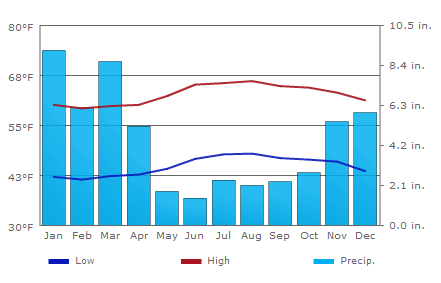 Hawaii generally has 2 seasons- the wet season, which occurs from October to April, and the dry season, which lasts from May to October. The temperature rarely goes above the high 80s, even in the summer months. Snow occasionally falls above 13,800 feet, on the Mauna Kea and Mauna Loa mountain peaks on the island of Hawaii. The state is the only one to never have recorded sub-zero temperatures. Kuaui’s Mount Waialeale boasts the second highest average annual rainfall on Earth, at around 460 inches.
Hawaii generally has 2 seasons- the wet season, which occurs from October to April, and the dry season, which lasts from May to October. The temperature rarely goes above the high 80s, even in the summer months. Snow occasionally falls above 13,800 feet, on the Mauna Kea and Mauna Loa mountain peaks on the island of Hawaii. The state is the only one to never have recorded sub-zero temperatures. Kuaui’s Mount Waialeale boasts the second highest average annual rainfall on Earth, at around 460 inches.
[wp_ad_camp_2]
History of Hawaii
Archaeological evidence shows that the earliest inhabitants of the Hawaiian islands were probably Polynesians from the Marquesas Islands, who arrived around 300 CE. Some historians believe that Tahitians arrived c. 100 and introduced the Kapu system (the ancient Hawaiian code of conduct), the practice of human sacrifice, a fresh line of high chiefs, and the building of temples called ‘heiaus’.
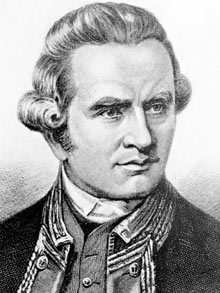 The first documented arrival of Europeans to the islands was in 1778, when British explorer James Cook landed. He named the islands the “Sandwich Islands” after his sponsor, who was the 4th Earl of Sandwich. The second time he visited the islands, Cook encountered trouble with the natives after he took temple idols and fencing, to be used as firewood. When a minor chief and his men took a boat from Cook’s ships, the explorer held King Kalaniopuu of Hawaii captive as ransom, in exchange for the return of his boat. His trade did not end well, as the King’s supporters fought back and killed four Marines and Cook himself as they tried to flee on their boats.
The first documented arrival of Europeans to the islands was in 1778, when British explorer James Cook landed. He named the islands the “Sandwich Islands” after his sponsor, who was the 4th Earl of Sandwich. The second time he visited the islands, Cook encountered trouble with the natives after he took temple idols and fencing, to be used as firewood. When a minor chief and his men took a boat from Cook’s ships, the explorer held King Kalaniopuu of Hawaii captive as ransom, in exchange for the return of his boat. His trade did not end well, as the King’s supporters fought back and killed four Marines and Cook himself as they tried to flee on their boats.
Later explorers and traders that visited the islands introduced diseases (smallpox, influenza, measles and others) that were catastrophic to the population of Hawaiian natives. More than half of the native Hawaiians were killed by 1820, from various diseases, famine, and wars. Then a fifth of the remnants were killed in the 1850s by an outbreak of measles.
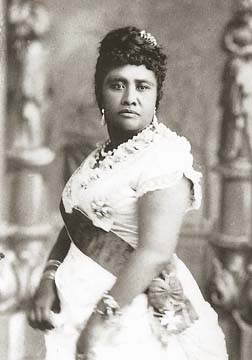
Known as the “Bayonet Constitution” because of it’s threat of violence, the 1887 Constitution of the
Kingdom of Hawaii was forced upon King Kalakaua, causing him to lose much of his power. He reigned until his death in 1891 and was succeeded by his sister, Queen Liliuokalani. She was overthrown in January of 1893 and a Provisional Government consisting of members of the Committee of Safety replaced her. As Liliuokalani tried to re-establish her throne, President Cleveland commissioned the Blount Report, which stated that removing Liliuokalani from her throne was illegal. The Provisional Government refused to reinstate the Queen to her throne, and was overthrown on July 4th, 1894, replaced by the Republic of Hawaii.
The Newlands Resolution, which annexed the Republic to the U.S., was passed in 1898, creating the Territory of Hawaii. Self-governance was granted to Hawaii in 1900 and Iolani Palace became the territorial capital building. 60 years later, Hawaii became the 50th U.S. state.
Population of Hawaii
 Hawaii’s population as of 2011 is 1,374,810, which is a 1.07% increase since the 2010 census. 2013 population numbers can be estimated and will updated in early 2014. Oahu is the most populous of the islands, with just under 1 million residents. The state’s average population density is 188.6 people per square mile. The average lifespan of Hawaii’s residents is longer than any other state, at 79.8 years. The state is made up of 38.6% Asians, 24.7% Whites, 10% Native Hawaiians and several other races. It has the highest percentage of Asian Americans, and the lowest percentage of White Americans of any of the states.
Hawaii’s population as of 2011 is 1,374,810, which is a 1.07% increase since the 2010 census. 2013 population numbers can be estimated and will updated in early 2014. Oahu is the most populous of the islands, with just under 1 million residents. The state’s average population density is 188.6 people per square mile. The average lifespan of Hawaii’s residents is longer than any other state, at 79.8 years. The state is made up of 38.6% Asians, 24.7% Whites, 10% Native Hawaiians and several other races. It has the highest percentage of Asian Americans, and the lowest percentage of White Americans of any of the states.
Languages in Hawaii
Hawaii’s two official languages are English and Hawaiian, as recognized in it’s 1978 constitution. Hawaiian ‘Pidgin’ (Hawaiian Creole English) is the primary language of many born-and-raised residents, and several people who have lived on the islands for a number of years have also adopted Hawaiian Pidgin. Other spoken languages are Spanish, Tagalog, German, French, and several other Indo-European and Asian languages.
Religions in Hawaii
Christianity is the state’s main religion, with 37.8% of the state’s population as members. Roman Catholicism claims 22.8% of the population, followed by Mormonism at 3.3% of the population and Judaism at 0.7%. 21% do not follow a religion, or are atheist. The Hawaiian religion of Hoʻoponopono is a philosophy and a way of life for many native Hawaiians.

